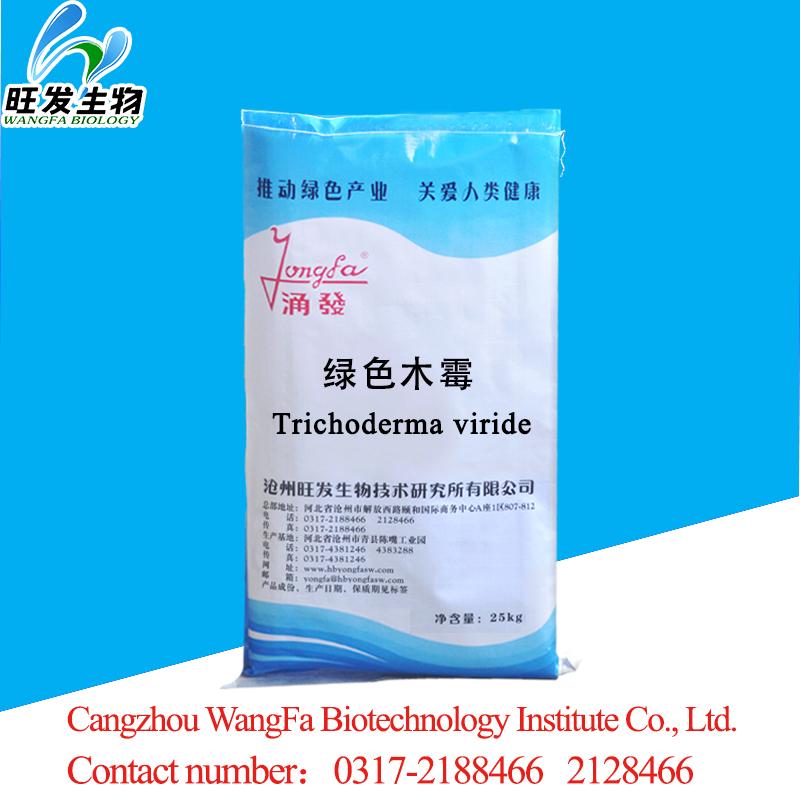
Trichoderma viride
Main ingredients: Trichoderma green and spores
Character: Powder
Scope of application: root rot, Botrytis cinerea, damping off, rot, damping off, Fusarium wilt, etc.
Biometric characteristics:
Trichoderma viride belongs to the subphylum, Cyclospora, myospora and mysticera, which can produce a variety of bioactive enzymes, such as cellulase, chitinase, xylanase and so on. It plays an important role in the biological control of plant pathology. The colonies of Trichoderma are rapidly growing, and they are amorphous cotton or dense clusters, and the color of its surface is mostly green. Mycelium has a septum, or or without hyphagid spores. Conidial stem is a short lateral branch of hyphae, symmetrical or alternate branching on the lateral branches, forming two and three branches, forming a small stalk at the end of the branch. Conidia are mostly oval, colorless or green, and the cellulase produced at the top of the stalks is good for degradation of crops.
Mechanism: Trichoderma viride is also a resource rich antagonistic microorganism, which plays an important role in plant pathology and biological control. It has dual functions of protection and treatment. Trichoderma viride can not control root knot nematode diseases such as vegetables, cucumbers and tomatoes. Trichoderma viride can produce antibiotics, nutritional competition, micro parasite, cell wall breakdown enzymes, and induce plant resistance. It can directly add fertilizer such as decomposing agent, organic fertilizer, biological agent and so on, and plays an important role in decomposing fibers and preventing pathological changes.
Main effects: 1.. Trichoderma viride is strong in vitality, and can quickly occupy space and absorb nutrients, so as to weaken and eliminate gray mold disease in the same habitat.
2. Trichoderma can form a heavy parasitic effect on Botrytis cinerea in a specific environment. It enters a host mycelium and forms a large number of branches and sexual structures, thus inhibiting the appearance of the symptoms of Botrytis cinerea.
3. Trichoderma viride produces various antibiotics, but also produces extracellular enzymes that inhibit cell growth, reproduction and infection. Trichoderma can produce chitinase, beta 21, 3 glucan enzyme, cellulase and protease to decompose the cell wall of plant pathogenic fungi or exudate glucosidase and other extracellular enzymes to degrade the antitoxin produced by pathogenic bacteria. At the same time, Trichoderma also secreted antibacterial protein or lyase to inhibit the infection of plant pathogenic fungi.

